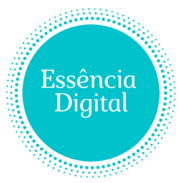Why Social Media Is a Game Changer for Freelancers
The digital age has transformed how freelancers connect with clients. Gone are the days when finding gigs depended on cold emails or agency contracts alone. Today, social media platforms make it possible to reach thousands—or even millions—of potential clients, build relationships, and establish your brand’s authority with just a few clicks. When used strategically, social media not only draws more eyes to your work but can fill your pipeline with a steady stream of high-quality leads.
Choosing the Right Platforms
Not all social networks are equally effective for freelancers. Focus your efforts where your ideal clients hang out:
- LinkedIn: Best for B2B, consulting, writing, design, tech, and professional services. Its search features, groups, and content sharing are invaluable for establishing authority.
- Instagram: A visual portfolio for designers, illustrators, photographers, and content creators. Ideal for building a polished brand and connecting through stories and DMs.
- Twitter (X): Great for writers, marketers, tech professionals, and real-time industry networking. Threads and hashtags can help you become part of global conversations.
- Facebook: Groups are a goldmine; many industries have active communities full of job leads, tips, and direct client access.
- TikTok & YouTube: Best for video-based creators, educators, and marketers. “How-to” content, case studies, and behind-the-scenes videos build trust and attract clients looking for your expertise.
- Behance/Dribbble: Essential for designers and those in creative industries; these are often searched directly by clients looking for talent.
Focus on 1–2 platforms to start; depth is more effective than spreading yourself too thin.
Building a Memorable, Trustworthy Profile
- Professional photo: Clear, friendly, and suited to your field.
- Consistent branding: Coordinated colors, logos, tone, and messaging across platforms.
- Clear bio: State your specialty, target client, and how you help (“I design high-converting websites for eco-friendly startups”).
- Portfolio links: Make it ultra-easy for prospects to see samples or contact you.
- Pinned content or highlights: Use these to direct attention to best work, testimonials, or introductory videos.
Think of your profile as a storefront—it should tell clients instantly what you do, who you help, and why you’re the best fit.
Content That Attracts Clients
What you post matters. To turn followers into clients:
- Showcase your work: Share project highlights, case studies, before-and-after images, or short videos explaining your process.
- Share testimonials: Screenshots or stories of happy clients provide irresistible social proof.
- Educate and offer value: Tips, insights, industry news, and how-to guides solve your audience’s problems and establish you as an expert.
- Behind-the-scenes glimpses: Show your process, workspace, or even “failures” and lessons learned for authenticity.
- Engage with others: Ask questions, run polls, and respond to comments—relationships begin in the comments and DMs.
Quality content posted consistently builds trust and keeps you top of mind when someone needs your skills.
Networking and Relationship Building
- Join niche groups/chats: Facebook Groups, LinkedIn Groups, Twitter chats, or specialized communities let you interact directly with potential clients.
- Collaborate: Partner with peers for joint workshops, live streams, podcasts, or blog swaps. Their audience becomes yours.
- Comment and support: Genuinely engage with others’ content; thoughtful comments are often noticed more than mass posts.
- Respond promptly: Opportunities can disappear quickly—set daily time for replying to DMs and comments.
The golden rule: Give before you ask—add value, and leads will come.
Social Selling Without the “Hard Sell”
No one likes being spammed with DMs or pushy pitches. Instead:
- Start conversations: Compliment a recent post, share an article, or ask for advice.
- Offer help: Solve a small problem or answer a question. Demonstrate, don’t just declare, your value.
- Use content as a magnet: Let your expertise pull prospects in—when they reach out, sales become a dialogue, not a pitch.
Patience pays off; most clients need to see your name and style several times before reaching out.
Leveraging Ads and Advanced Strategies
Once organic strategies are established, you might consider:
- Targeted ads: Platforms like Facebook, Instagram, and LinkedIn allow you to build precise campaigns to reach specific industries or regions with portfolio pieces or lead magnets.
- Lead magnets/free resources: Offer downloadable checklists, mini-courses, or e-books in exchange for contact details.
- Retargeting: Pixel-based ads can “follow” visitors from your portfolio or posts, reminding them of your services.
Warning: Paid strategies require budgeting and experimentation to be effective. Start small and track results.
Tracking and Improving Your Results
- Set goals: e.g., reach 1,000 followers, land three inquiries per month, or secure one new client each quarter from social media.
- Use analytics: In-platform tools reveal what content is performing and when your audience is most active.
- Refine your approach: Double down on posts and engagement that attract real client leads, not just likes.
Avoiding Burnout and Tunnel Vision
- Batch content creation: Spend a few hours a week planning and scheduling posts so you’re not glued to your phone.
- Set boundaries: Avoid the pressure to be “always on.” Social media should serve your business, not consume it.
- Unplug for clarity: Occasionally, step back and analyze what’s working from a distance.
Legal and Ethical Considerations
- Respect copyright: Only post work you have rights to share.
- Obtain client permission: For portfolio posts involving client assets or brands.
- Disclose paid promotions or affiliate links: Stay transparent to protect your brand and audience trust.
Conclusion: Consistent, Authentic Social Media = Clients
Social media is a dynamic, evolving tool. Approach it with curiosity and consistency, view it as a place to provide value—not just advertise—and you’ll naturally attract your ideal clients over time.
Remember: The best clients are looking for not just a freelancer, but a connection, a story, and a reason to trust you. Use social media to be that choice.

